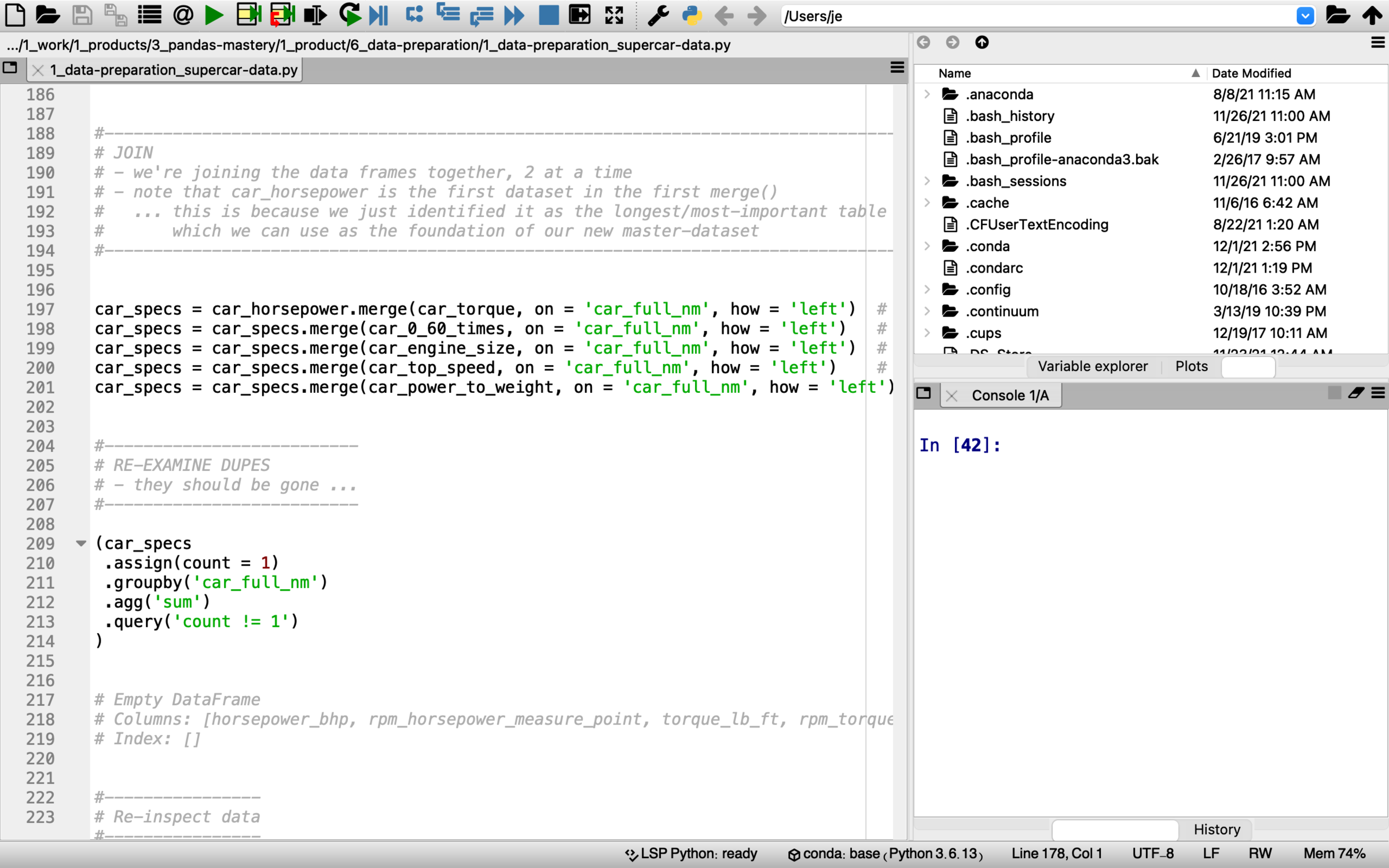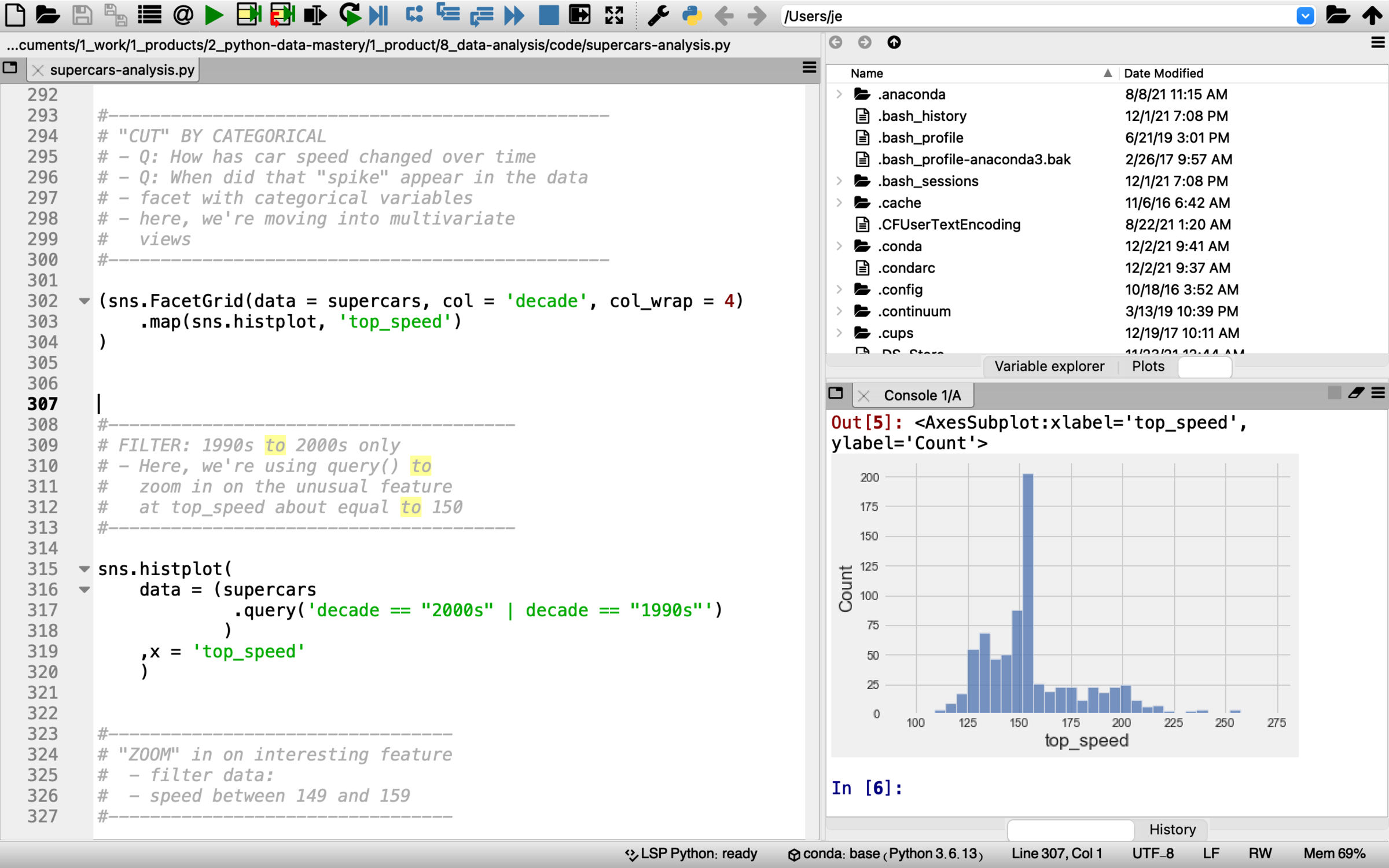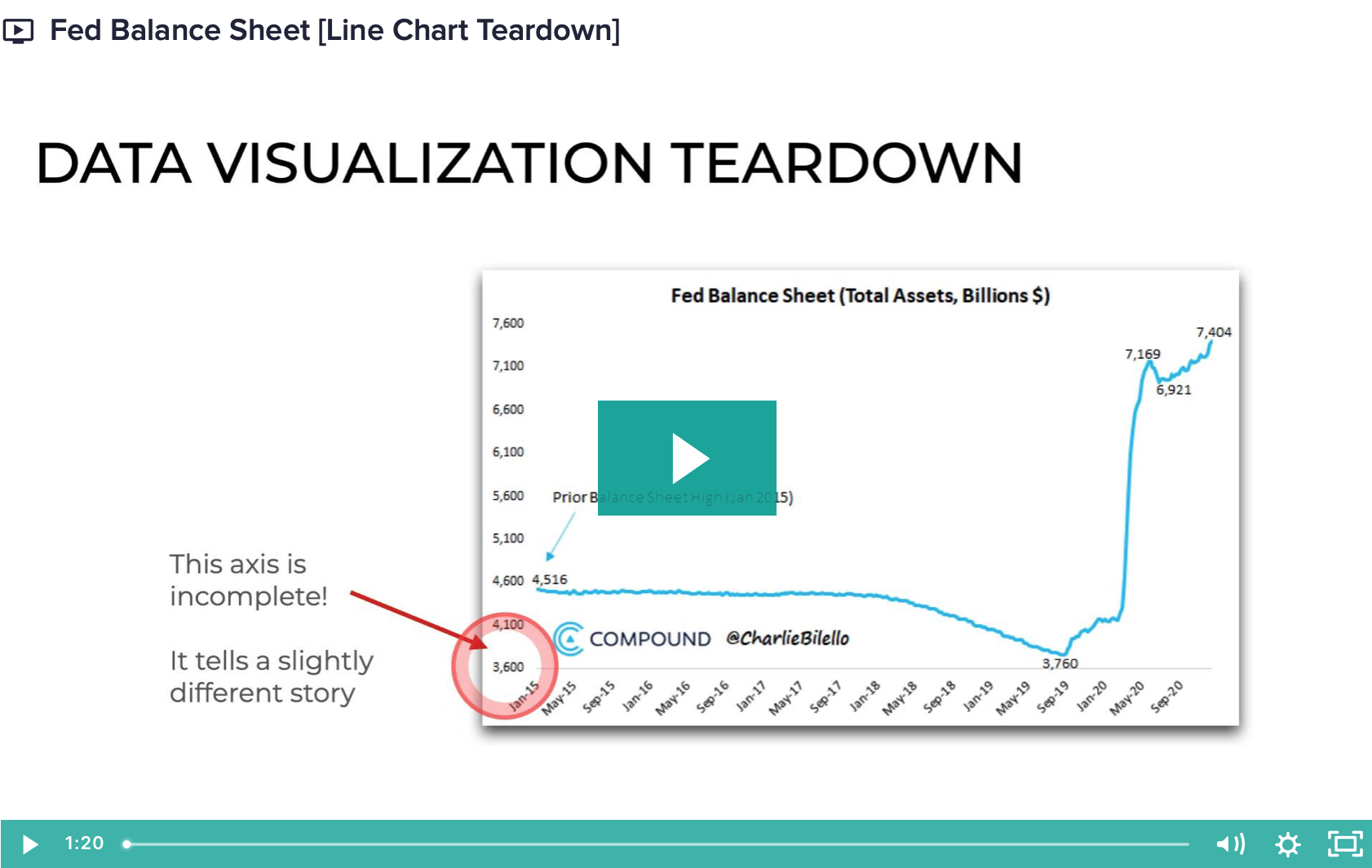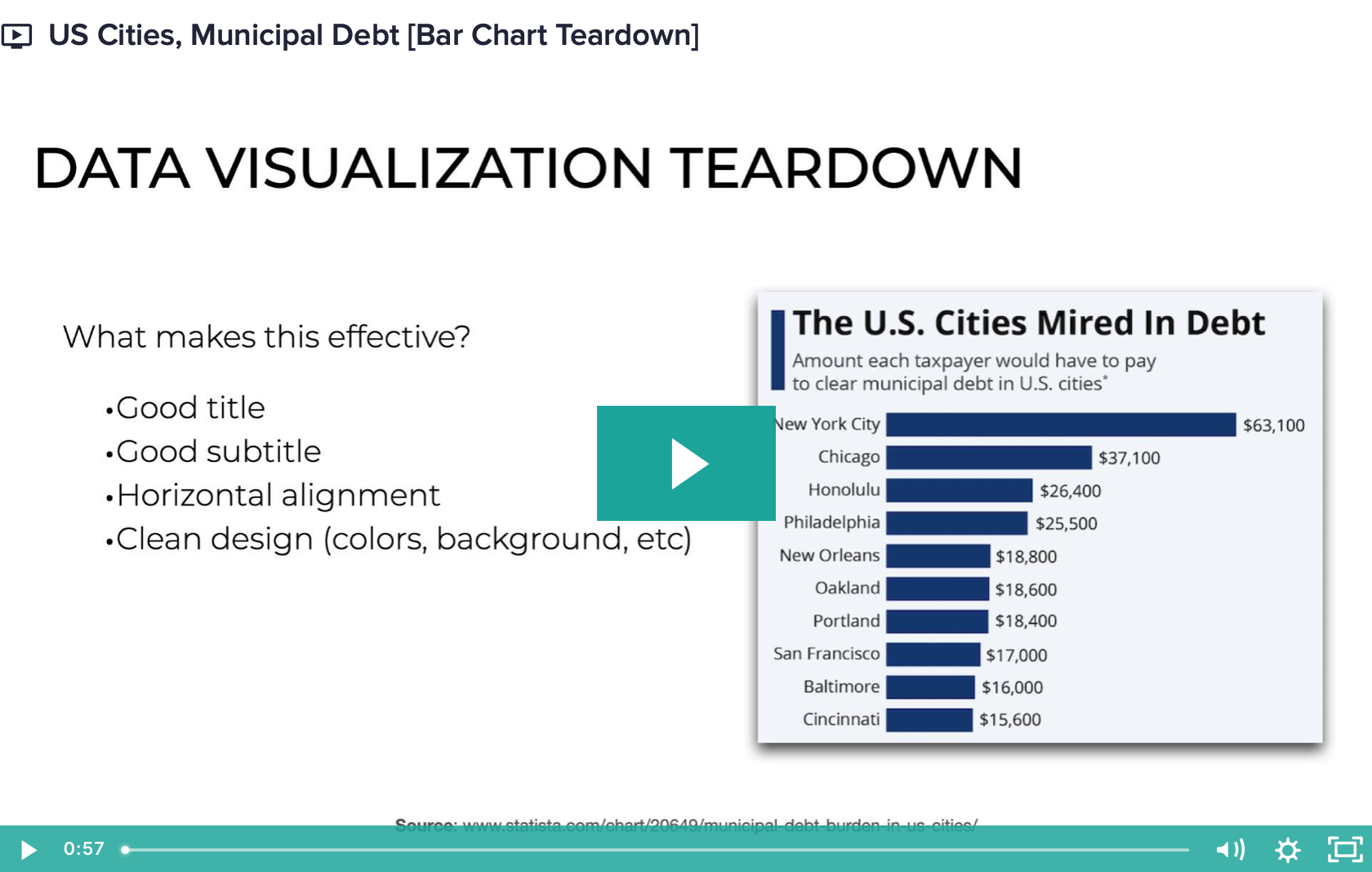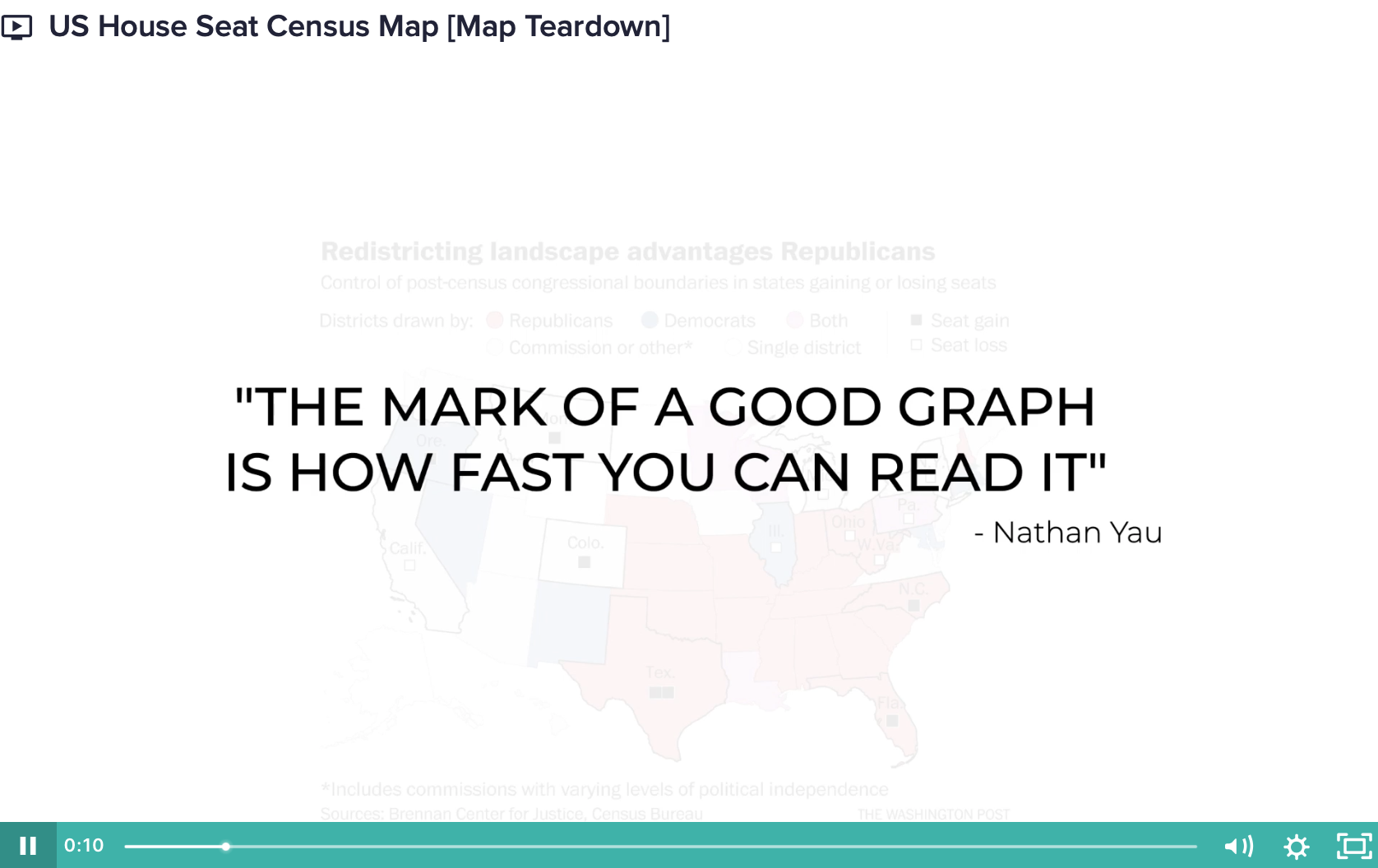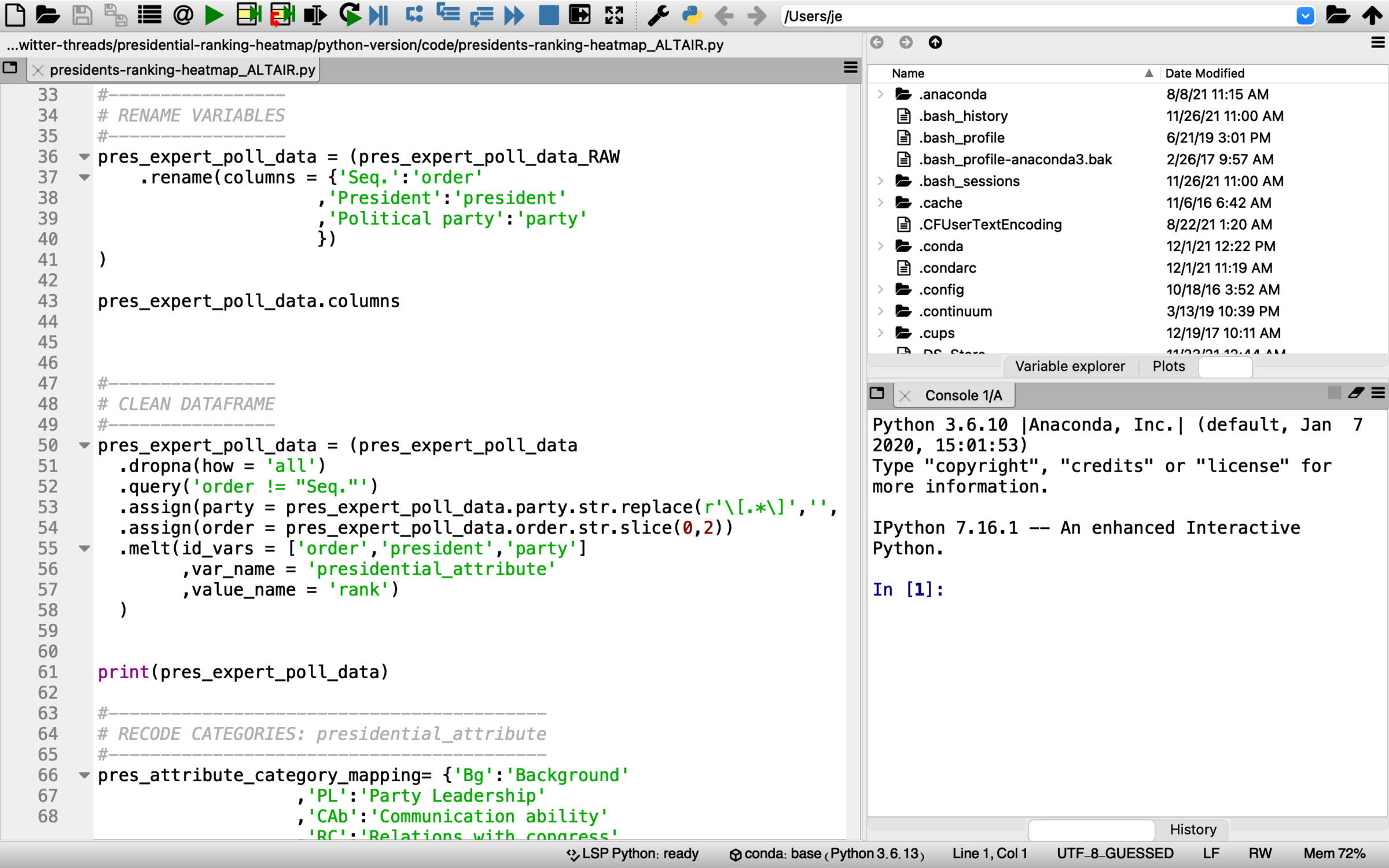
Introducing …
PYTHON DATA MASTERY
Discover the fastest, most effective way to learn data science in Python
• Master Python data science syntax
• Learn essential data science skills in weeks
• Become “fluent” in writing Python code
In Python Data Mastery, you’ll learn essential data science skills
Python Data Mastery will teach you several critical areas of data science: basic programming, data manipulation, and data visualization.
To do this, you’ll learn four areas within Python:
- Base Python
- NumPy
- Pandas
- Matplotlib
Specifically, here’s what you’ll learn when you join:
Base Python
In the first two modules, you’ll learn base Python.
The Python programming language forms the foundation of data science in Python, so you need to know quite a bit about data types, logic, and control structures.
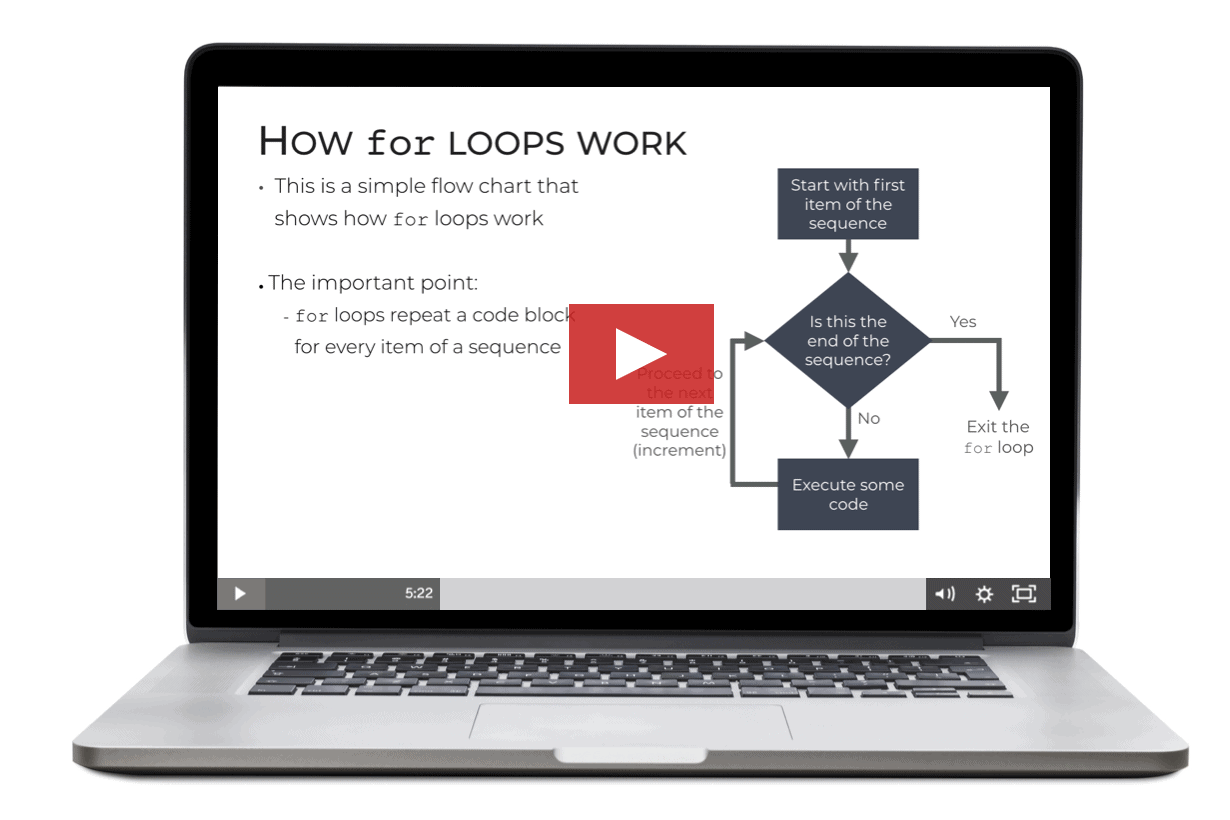
With that in mind, you’ll learn:
- data types
- how to perform mathematical calculations in Python
- logical expressions
- strings
- lists and tuples
- if/else statements
- for loops
- functions
If you’re a true beginner to Python, these topics will be explained in a clear, easy to understand manner, so it will all be crystal clear.
And if you have a little experience with Python, you’ll discover a training system that will enable you to become “fluent” in all of these foundational techniques.
NumPy
After learning about base Python, you’ll learn about NumPy.
The NumPy package is a toolkit for working with numeric data. It’s widely used in a variety of tasks within data science, like statistics, data visualization, and machine learning.
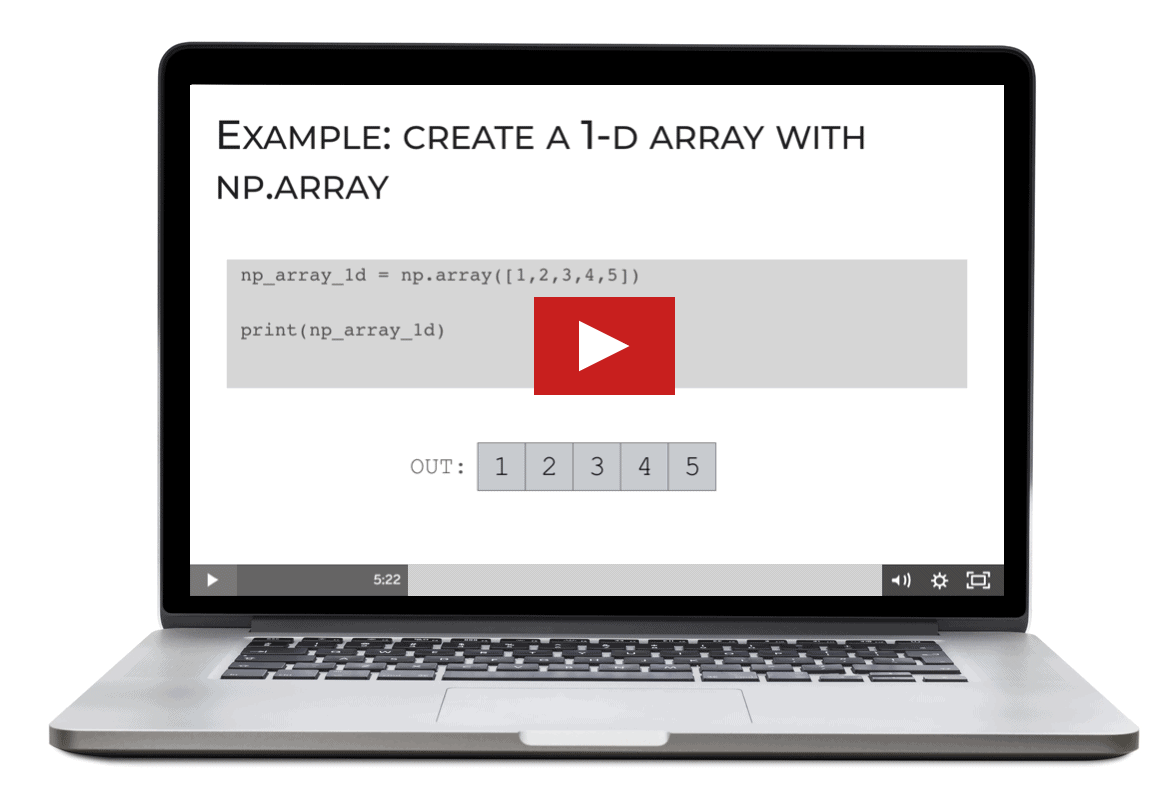
Because it’s so common, you really should know Numpy backwards and forwards.
In the NumPy lessons, you’ll learn everything you need to know, like:
- What NumPy arrays are
- How to think about array axes
- How to reshape NumPy arrays
- How to “split” and “combine” NumPy arrays
- How to aggregate the numbers in NumPy arrays (i.e., sum, average, min, max)
- How to generate NumPy arrays with random data
Again, everything will be explained in a clear, straightforward manner that makes it easy for you to understand.
And you get practice exercises that will enable you to master every tool and technique that you learn.
Pandas
Next, you’ll learn about Pandas, which is a toolkit for working with “dataframes.”
If you’re not familiar with them, dataframes are row-and-column data structures that are very common in data science. They are sort of like Excel spreadsheets, and they are extremely common for storing and analyzing data.
Specifically, you’ll learn:
- What dataframes are
- How to create dataframes from raw data
- How to import csv data into a dataframe
- How to add variables to dataframes
- How to delete variables from dataframes
- How to subset and “slice” dataframes
- … and more
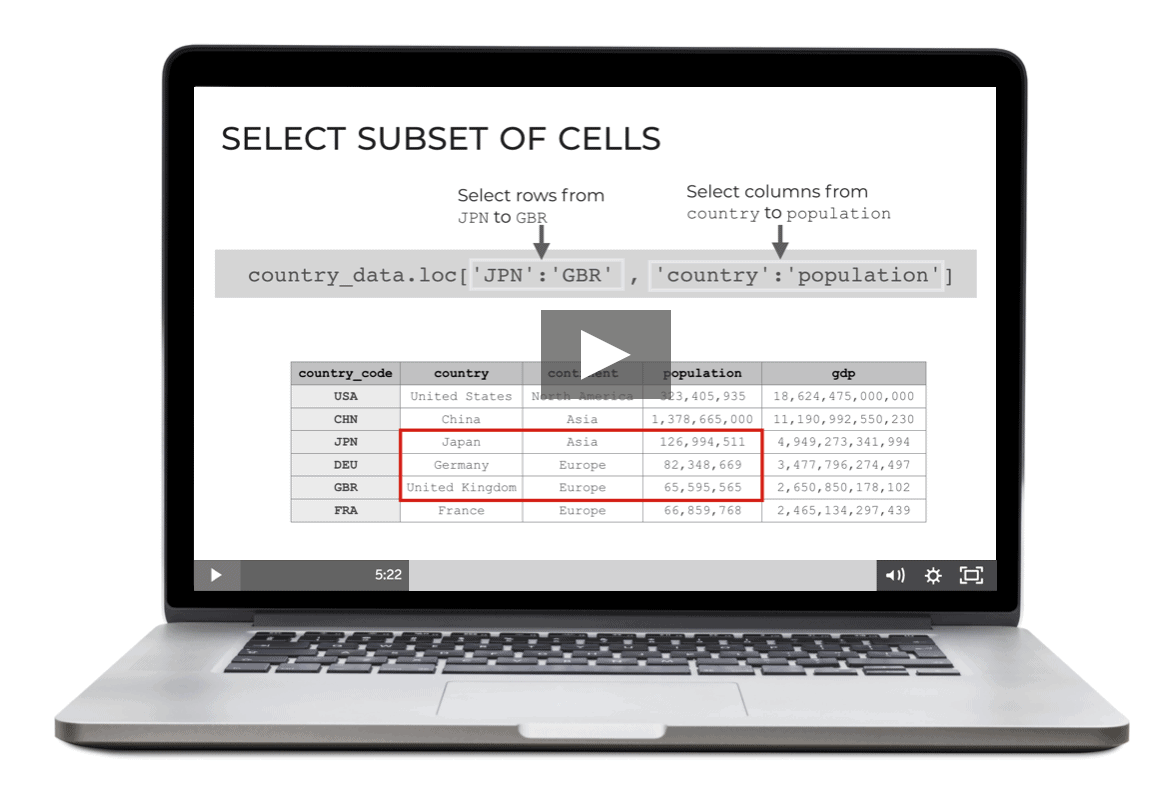
Pandas is extremely useful for doing data manipulation in Python. In fact, you’ll need Pandas in almost every part of the data science workflow. We’ll help you learn it so well, you’ll be “fluent” in writing Pandas code to manipulate your data.
Matplotlib
You’ll also learn about matplotlib.
Matplotlib is an extremely common data visualization toolkit for Python.
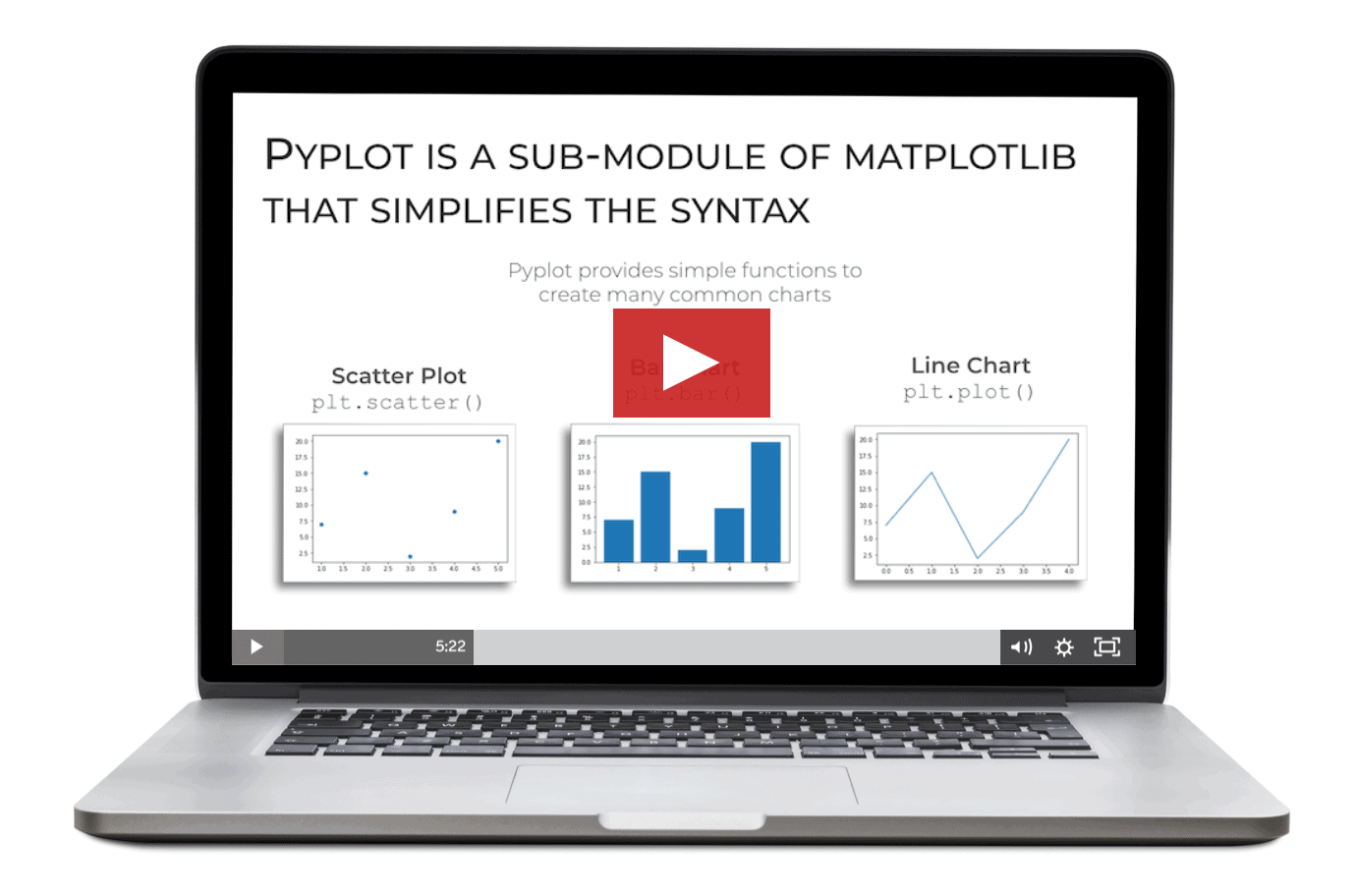
In the Matplotlib modules, you’ll learn:
- How to create bar charts
- How to create scatter plots
- How to create histograms
- How to create line charts
- How to format your data visualizations with “style sheets”
Seaborn
Next, you’ll learn about Seaborn.
Seaborn is another data visualization toolkit for Python. The advantage of Searborn is that it’s easier to use than Matplotlib, and it works better with Pandas DataFrames.
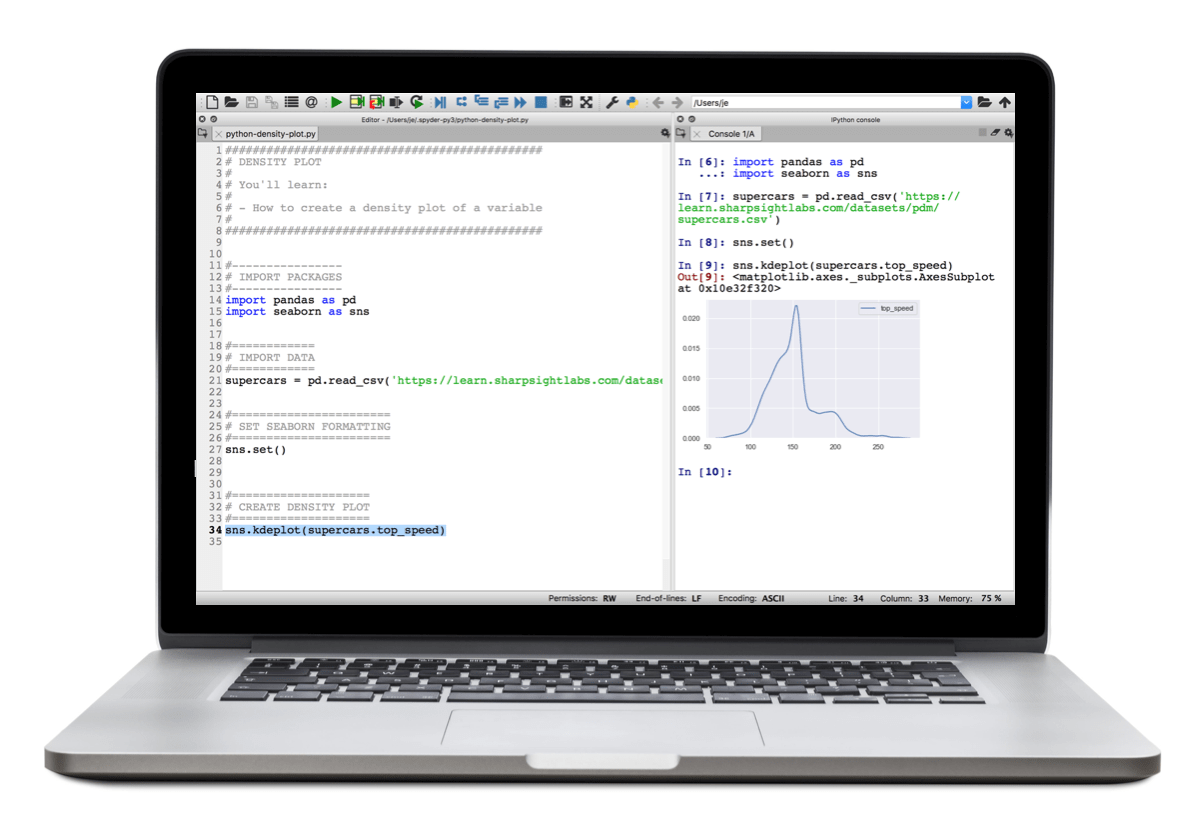
In the Seaborn modules, you’ll learn:
- How to create Seaborn bar charts
- How to create scatter plots with Seaborn
- How to create density plots
- How to create line charts with Seaborn
- How to make “small multiple” charts (this is a powerful technique!)
- … and more
Learn how to combine syntax
Once you master the individual tools from Pandas, Numpy, and Seaborn, we’ll show you how to “put the pieces together” …
You’ll learn how to combine syntax together to do real data science work.
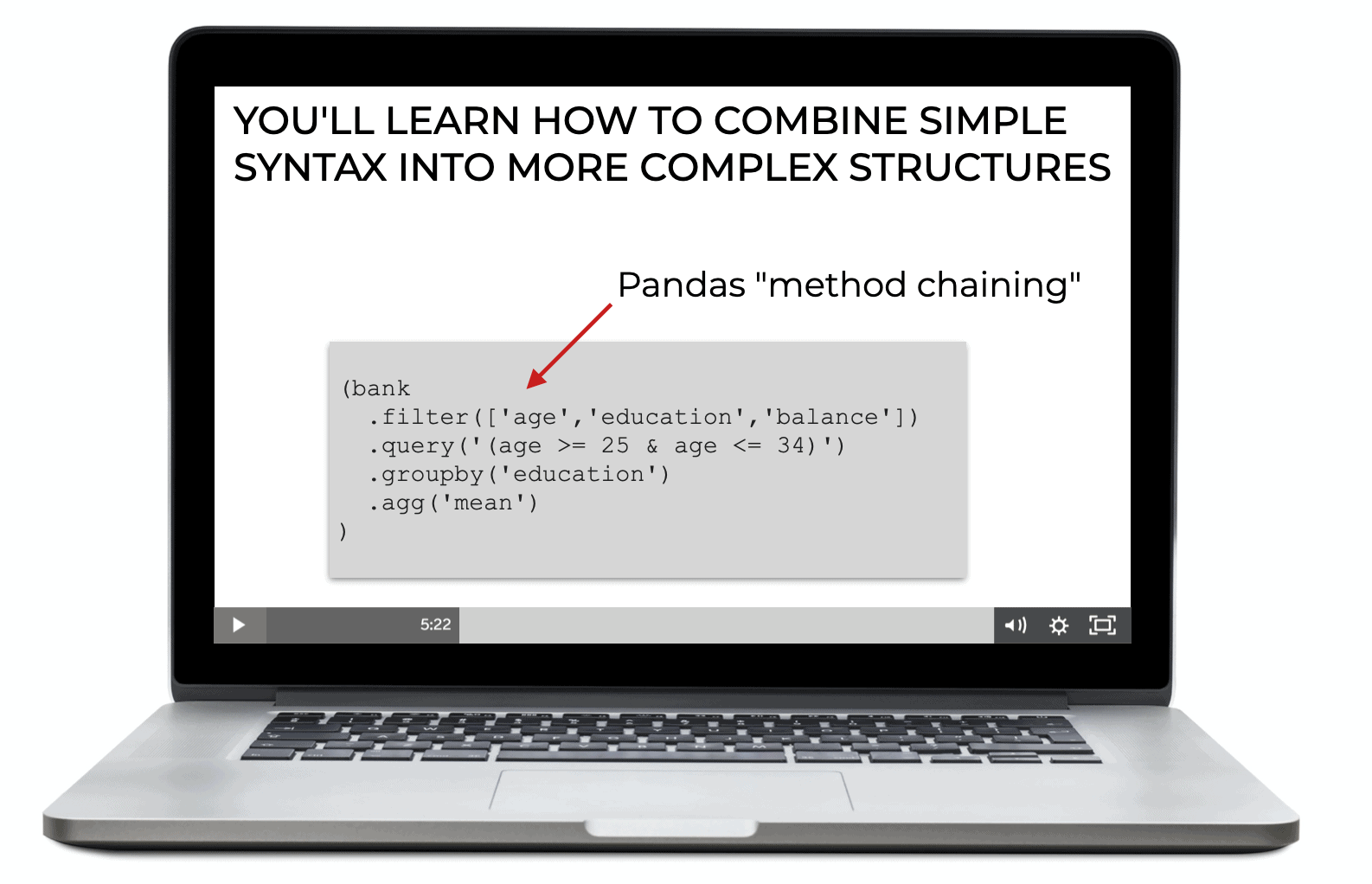
This is the secret to real productivity with Python.
Once you learn how to combine syntax together, you’ll be able to wrangle and visualize your data like a pro.
(If you’ve been looking for something like dplyr pipes from R, you need to learn this!)
Data Cleaning
and Dataset Preparation
After you learn how to combine syntax, you’ll learn the process for data cleaning and dataset preparation.
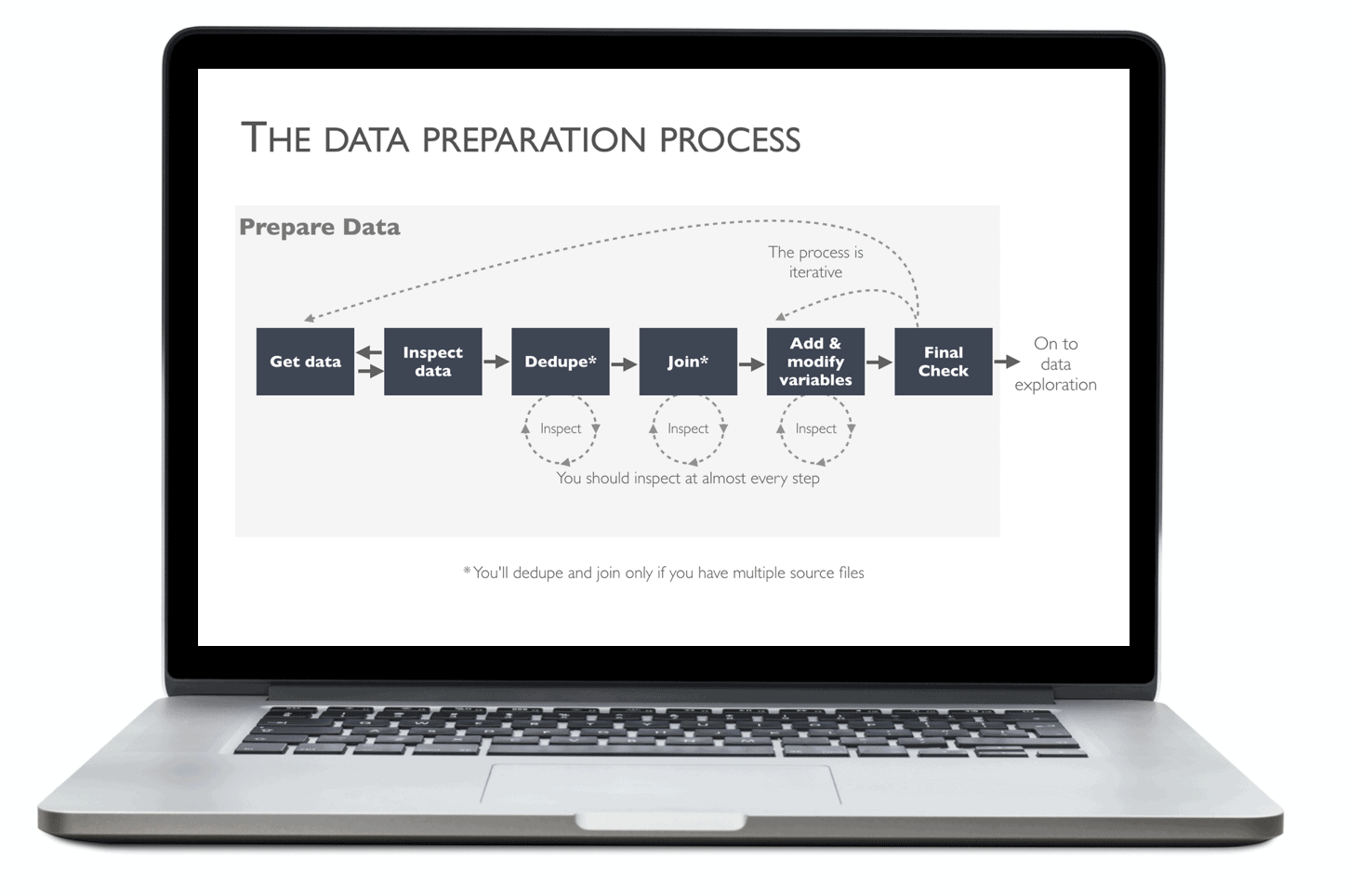
In Python Data Mastery, you’ll learn a step-by-step process for getting, cleaning, and reshaping your data.
You’ll learn the high-level process. But we’ll also show you a clear data preparation case study, so you can see exactly how to use Pandas and other tools to clean, reshape, and combine multiple data files into a single dataset that’s ready for visualization and analysis.
If you’re struggling with cleaning your data, then these lessons can show you exactly what to do, and how to do it.
Data Analysis
You’ll also learn a step-by-step process for analyzing your data.
You’ll learn how to combine techniques from base Python, Pandas, Seaborn, and other modules to analyze data and find insights.
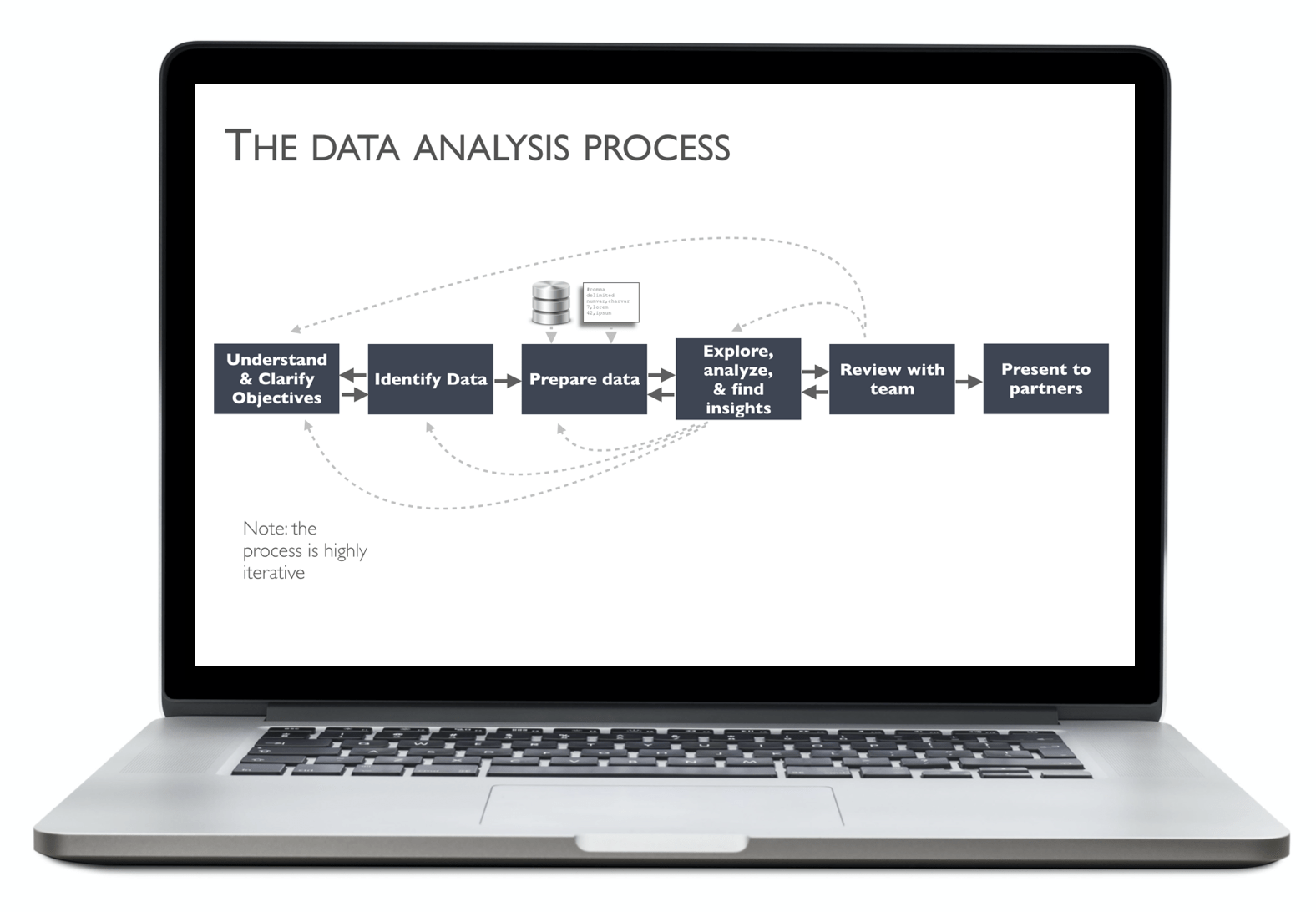
So you’ll learn the high-level process of data analysis …
But you’ll also see step-by-step examples of how data analysis is actually done in Python.
We’ll show you how to use data wrangling and data visualization tools together to explore a dataset and find the insights that companies want.
Machine Learning Essentials
with Scikit Learn
After you learn data analysis, you’ll learn machine learning essentials with Scikit Learn.
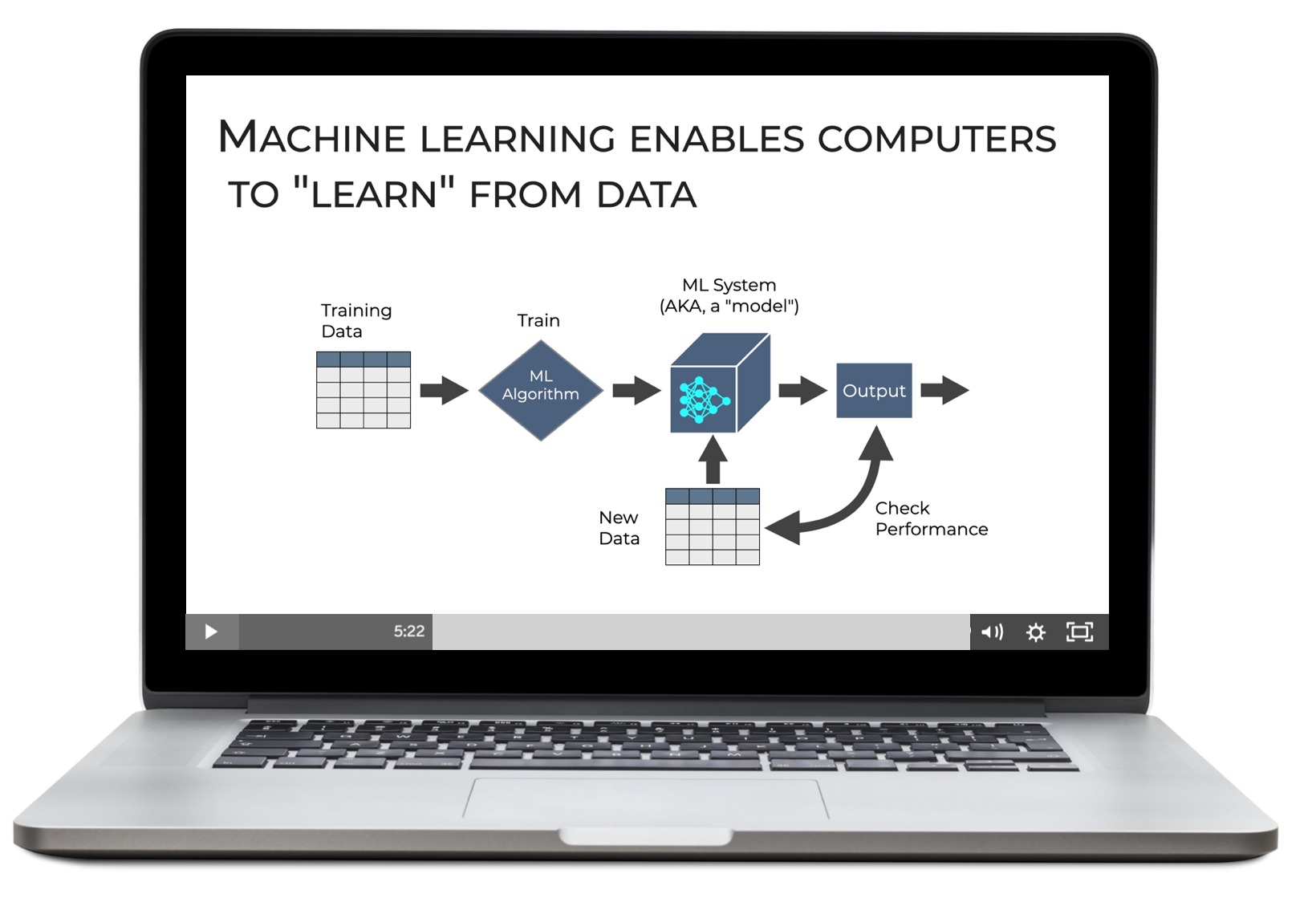
You’ll learn what machine learning is, and learn about the high-level process of building ML models.
You’ll also learn the essential syntax of scikit learn.
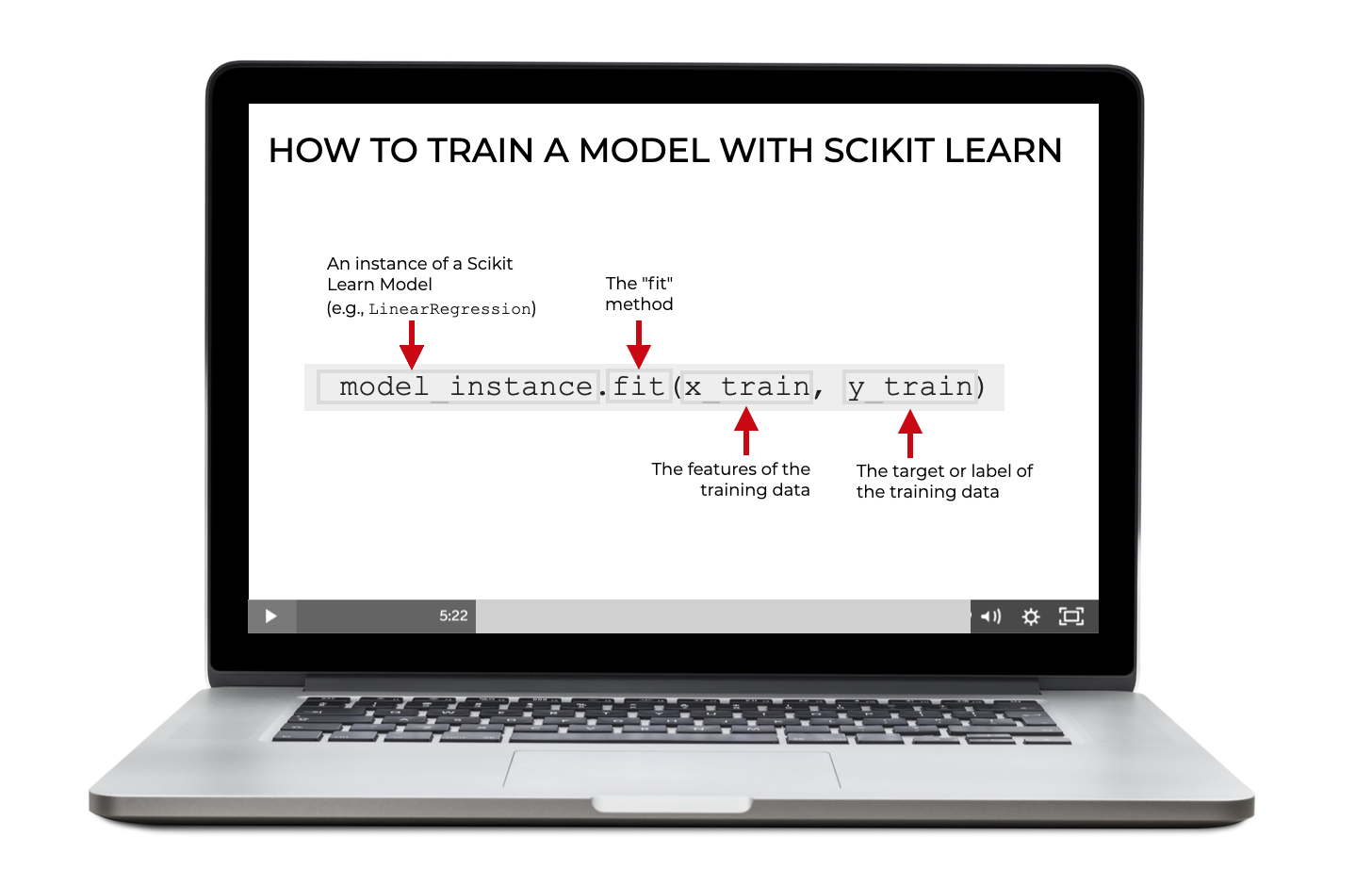
These lessons will give you a solid foundation in machine learning essentials that will prepare you for more advanced future study.
Bonus Vaults
Python Data Mastery also contains bonus vaults of extra material.
- data visualization teardowns
- examples of end-to-end projects
In the “data visualization teardown” vault, you’ll learn more about “how to think” about data visualization, and how to “tell stories with data.”
In these video lessons, I break down data visualizations and explain the good, the bad, and the ugly. These lessons will help you sharpen your understanding of how to effectively use data visualizations to communicate valuable insights.
In the project vault, you’ll see an example of an end-to-end project that involves getting data (from Wikipedia), cleaning the data, and visualizing it. This video lesson integrates many of the skills learned in the course, and shows you another example of how they are actually used, in practice.
The code that you see in this vault will help you understand how everything fits together, and will give you ideas for how you can put your new data skills to use.
Become “fluent” in Python data science
Python Data Mastery has been carefully designed to help you become “fluent” in Python … to help you master the techniques of data science in Python.
Imagine…
You sit down at your computer to work on a data science project, and you type the code effortlessly.
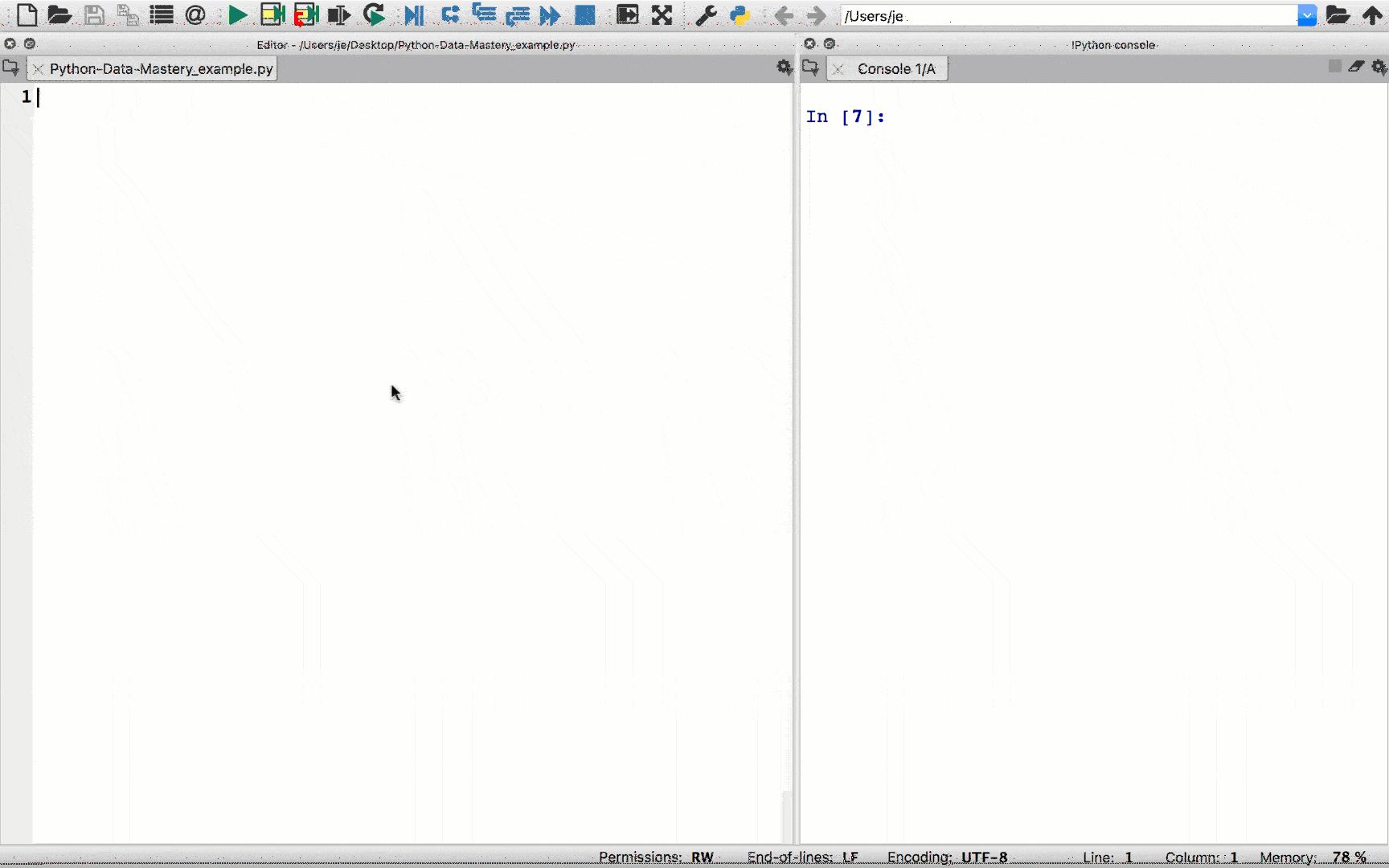
That is what real skill looks like.
When you join Python Data Mastery, you’ll discover a training system that will help you become “fluent” in critical Python syntax.
Our training system will enable you to memorize the syntax for base Python, NumPy, Pandas, Matplotlib, and Seaborn.
By memorizing the essential syntax, you’ll build the foundation for writing more complicated pieces of data science code.
The simple syntax that you memorize will become the “building blocks” for more complex data science projects.
It’s like learning a foreign language. First, you need to master essential vocabulary. But after that, you can start putting that vocabulary together in more complex ways. If you practice dilligently, you’ll become “fluent” in that language. You’ll be able to speak fluidly and rapidly.
It’s the same thing with learning a programming language like Python. You have to learn the “vocabulary” and then you move on to building things that are more complex.
Python Data Mastery will show you exactly how to become “fluent” in Python …
After a few weeks of practice, you’ll be able to write Python data science code fluently, rapidly, and from memory.
“Your practice method is simply effective beyond words”
– Joshua F., Sharp Sight student
When you join Python Data Mastery, you’ll get everything you need to master data science fast:







Try the course
risk-free for 30 days

Try the course.
If you’re not completely satisfied with your progress, let me know within 30 days and I’ll refund all of your money, no questions asked.
This is entirely RISK FREE for you. You’ll get to try out the best resource for learning critical data science skills and if you’re not completely satisfied, I’ll refund your money.
Yes! Upgrade My Order
to Python Data Mastery!
Choose Your Payment Option:
Option 1:
One Time
Payment
When you upgrade, you’ll get lifetime access to the Python Data Mastery course, including videos, code, practice exercises, and all future updates.
One additional
payment today of:
$297
You’ll save an extra $38
today when you pay in full.
Choose this option for the lowest price.
Option 2:
Monthly
Installments
When you upgrade, you’ll get lifetime access to the Python Data Mastery course, including videos, code, practice exercises, and all future updates.
5 additional
monthly payments of:
$67
This option is designed to keep this training cashflow-friendly. When you upgrade with the payment plan, you agree to make all 5 payments.
